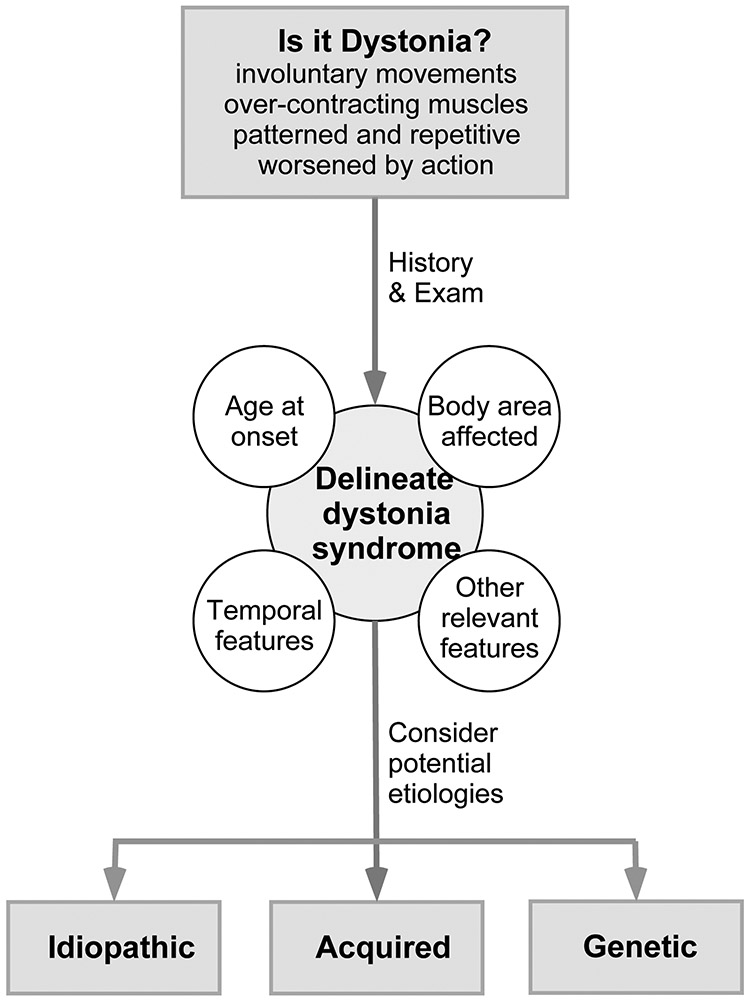Figure 2. Diagnostic approach.
This algorithm provides a basic strategy for the diagnostic approach to most patients with dystonia. The initial step is to determine whether the disorder being considered is a type of dystonia, or something that may mimic dystonia. The next step is to use the history and examination to delineate the dystonia syndrome, using the main clinical features used for classification. The third step is to consider potential etiologies.

